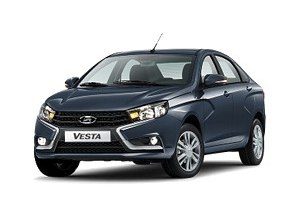
Volvo C30 1.6D DRIVe Start / Stop Momentum (Start / Stop Momentum)
For example, ecology. Volvo, along with several other manufacturers (the group multiplies like mushrooms after rain), have joined the collective environmental consciousness and have 'affixed' a label to their green versions. Drive unit.
In the battle to reduce carbon emissions (and thus reduce workloads and tarnish environmentalists' reputations), he finally incorporated an engine stop and restart system (start and stop), which was among the first to reach the magic limit of one hundred grams per kilometer.
The Swedish sweat ended at number 99, which is a casual passer-by compared to thirty in a bright metallic "orange flame" similar to the claimed consumption of 3 liters per hundred kilometers compared to the tempting pricing in stores.
In practice, it turns out that the efforts of engineers in the form of a favorable consumption of an adapted aerodynamic package (suspension 10 millimeters lower, flat chassis, wheels, spoilers), longer gear ratios, optimized steering, regeneration of braking energy, an optimal gear ratio, the already mentioned start system & stop, diesel particulate filter, fuel efficient tires and other evolutionary steps do not disappoint, but at the same time do not mean a magic recipe for savings.
Make no mistake: the test model, according to the on-board computer, at 70 km / h in fifth gear (and 1.400 rpm) delivers almost drop by drop, consuming only 2 liters of oil per 5 km, as modestly (all in top gear). and with the help of cruise control) I recorded 100 liters at a speed of 3 km / h, and only five liters are required on the highway.
The smallest Volvo does not feel thirsty even at top speed (190 km / h at 3.800 rpm), when the injectors diverge hundreds of kilometers. about 11 liters of fuel.
Test consumption (6, 6 liters) This is indeed the result of a heavier test stage, but on average you will find it difficult to come close to the factory promises (even on well thought out relational rides), despite the gentle touch of the accelerator pedal.
On the other hand, you will have similar problems exceeding eight liters, which will definitely put a big smile on the driver's face as he can enjoy the excellent driving performance of his spare wheel inexpensively. First to the engine.
The 1-liter four-cylinder diesel engine with 6 "horsepower" and 109 Nm of torque (at 240 rpm) is part of the group's globalization policy and, in fact, is a reliable soul and a quiet companion. We cannot blame him for his immunity (earlier it was the other way around), he likes to turn to 1.750, he is only worried about the turbo opening below 5.000 rpm, which can be inconvenient, especially when driving uphill and suddenly pulling away from intersections (if the speed falls too low, the turbocharger needs to wake up again after a few seconds).
In this case, the five-speed gearbox is not very useful with its transmissions, but it is quickly compensated by the excellent feel on the gear lever and the ability to decisive and precise shifting, which has also been confirmed by our measuring instruments.
The start & stop system works without problems (if you get bored with it, you can turn it off with a simple push of a button), we only blame it for fulfilling its mission even with a cold engine (when the water temperature indicator is not even on the first line).
When the device is turned off, the consumer's need for music and cooling is constrained by an additional battery (which is much smaller than the main battery), and re-ignition is timeless as it is suddenly triggered by pressing the clutch or accelerator. pedals or by repeatedly pressing the brake.
This is part of the challenge (although the pedal feel is no different from the average for the class), which is not easy as the car is shod with Michelin Energy Saver tires and is also tough and sporty (and yet comfortable enough). ) chassis. enjoy driving.
The C30 is neutral for a long time, it prefers to steer safely on the border, but if you have the devil on your shoulder, you can enjoy your butt, enjoy your butt and enjoy the racing turns.
Even a tier or two more powerful unit wouldn't complain about this chassis! The switchable DSTC traction control and stability control system helps to behave discreetly at high speeds, which is in stark contrast to the sudden start on wet surfaces, where the work is too abrupt.
As befits a northerner, Volvo did not skimp on passive safety, since the usual four airbags in the front of the passenger compartment are accompanied by side curtain airbags (on both sides of the cabin), a side impact protection system (SIPS), a system on the side front seats for protection from injuries of the neck and spine (WHIPS). ...
The ergonomic position behind the (large) steering wheel makes you feel good, the seats (which are not designed for racing needs) fit perfectly (and problems with lumbar adjustment are quickly forgotten), there is ample storage space and minimalism is a real pleasure: the dashboard with a spectacular center console and an excellent High Performance audio system (optional).
Nergachi might say that the passenger's surroundings are too sterile and the middle is overflowing with automatic dual-zone air conditioning and radio buttons, but in reality we were only bothered by the occasional touch of the latter when overtaking.
A little more bad mood is created by a small back bench (it's good that Volvo did not impose a third seat in the back) and a modest trunk with emergency shutters, but who says this Volvo wants to play the role of the first trump card of the family?
The day before, we see this earlier in the premium compact car segment with a different customer base than, say, the popular Golf (and we'll get back to politics).
The lack of caps lacks perfectionism, as hard plastic with inaccurate joints (around the handbrake) spoils more than solid workmanship, and the back bench entry system values a hand with a lot of testosterone more than a proper technique.
Large doors that are heavy, awkward to open (in tight parking spaces) and require more force to close also deserve criticism. An extension of this problem are the front belts, which are mostly quite far from the comfortable range of the hands - the nausea is partially alleviated by a pin next to the seats, where we put the belts for easier access (and thus cause gray hairs for incoming or outgoing rear passengers ).
We deliberately left the important candy for last. You guessed it, the appearance. At Thirty, Volvo's refurbishment policy was strong as the exterior, especially the front end, had been "redecorated" in the truest sense of the word. The headlamps with fenders and bumper merge almost together, while a nice honeycomb grille and large Volvo emblem inspire even more awe in the cars ahead.
On the highway, they retreat faster than any accomplished athlete. The C30 has become aggressive, far more aggressive than its price tag, with which the Swedes are targeting a clientele that does not solve an existential automotive problem and whose average consumer mentality is insufficient.
Momentum equipment (halfway between the base Kinetic and the richer Summum), in contrast to the cheaper base trim at around 2.000 euros, includes 16-inch alloy wheels, fog lights, cruise control, rain sensor, trip computer, self-extinguishing mirror and multifunction steering. the steering wheel, about 2.000 euros more expensive than the Summum, on the other hand, only offers bi-xenon headlights and heated seats (useful leather inside and 17-inch wheels, we carelessly refuse).
Returning to the original association, it promises much but delivers far less - in some areas it offers less than expected, but therefore excels in most others. And this is from the textbook of successful Volvo politics.
Matei Groshel, photo: Matei Groshel
Volvo C30 1.6D DRIVe Start / Stop Momentum (Start / Stop Momentum)
Basic data
| Sales: | Volvo Car Austria |
|---|---|
| Base model price: | 20.400 € |
| Test model cost: | 22.524 € |
| Calculate the cost of auto insurance | |
| Power: | 80kW (109 KM) |
| Acceleration (0-100 km / h): | 11,3 with |
| Maximum speed: | 190 km / h |
| Mixed flow ECE: | 3,9l / 100km |
Technical information
| engine: | 4-cylinder - 4-stroke - in-line - turbodiesel - displacement 1.560 cm? – maximum power 80 kW (109 hp) at 4.000 rpm – maximum torque 240 Nm at 1.750 rpm. |
|---|---|
| Energy transfer: | front wheel drive engine - 5-speed manual transmission - tires 205/55 R 16 V (Michelin Energy Saver). |
| Capacity: | 190 km/h top speed - 0-100 km/h acceleration in 11,3 s - fuel consumption (ECE) 4,9/3,4/3,9 l/100 km, CO2 emissions 99 g/km. |
| Mass: | empty vehicle 1.373 kg - permissible gross weight 1.780 kg. |
| External dimensions: | length 4.266 mm - width 1.780 mm - height 1.447 mm. |
| Inner dimensions: | fuel tank 52 l. |
| Box: | 233 |
Our measurements
| T = 12 ° C / p = 1.120 mbar / rel. vl. = 33% / Odometer Condition: 4.800 km | |
| Acceleration 0-100km: | 11,0s |
|---|---|
| 402m from the city: | 17,7 years ( 127 km / h) |
| Flexibility 50-90km / h: | 10,2s |
| Flexibility 80-120km / h: | 12,8s |
| Maximum speed: | 190km / h (V.) |
| test consumption: | 6,6 l / 100km |
| Braking distance at 100 km / h: | 39,1m |
| AM table: | 40m |
evaluation
Attracted by the updated design, excellent chassis, economical engine and minimalist interior. The C30 has a few raids and is not cheap in the test configuration, but not among the average. A car with its target audience.
We praise and reproach
Transmission
conductivity
Alloy
turbo bore engine
consumption
updated look
driving position
minimalistic interior
rear bench and trunk
turbo hole
fine superficiality in production
approximately DSTC
big door
price

